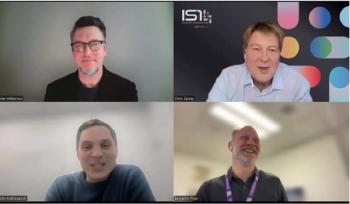
Sanofi Outlines Long-Term Objectives
Sanofi outlined its long-term financial objectives this week as the company discussed its strategy in mitigating generic-drug incursion and in generating growth in key therapeutic areas and emerging markets.
Sanofi outlined its long-term financial objectives this week as the company discussed its strategy in mitigating generic-drug incursion and in generating growth in key therapeutic areas and emerging markets.
“Sanofi has undergone an impressive transformation over the last two and a half years, and the patent cliff is now almost behind us,” said Sanofi CEO Christopher A. Viehbacher, in a Sept. 6, 2011,
In 2012, Sanofi faces the loss of US patent exclusivity for two key drugs: the antiplatelet agent Plavix (clopidogrel bisulfate) in May 2012, and the antihypertensive drug Avapro (irbesartan) in March 2012. In 2010, Plavix had net sales of EUR 2.1 billion ($2.9 billion), and the Aprovel franchise—Aprovel and CoAprovel (irbesartan and hydrochlorothiazide)—had net sales of EUR 1.3 billion ($1.8 billion). Sanofi estimates that the impact of the loss of patent exclusivity for these drugs in 2012 will be EUR 1.4 billion ($2.0 billion), net of tax.
This anticipated financial impact is in addition to further generic-drug incursion expected in 2011. Sanofi expects that sales of key genericized products to decline to approximately EUR 3 billion ($4.2 billion) in 2011 compared with sales of EUR 7.6 billion ($10.6 billion) in 2008. These products include Lovenox (enoxaparin sodium) in the US, Plavix in Western Europe, Taxotere (docetaxel) in Western Europe and the US, Eloxatin (oxaliplatin) in the US, Ambien CR (zolpidem tartrate) in the US, Allegra (fexofenadine hydrochloride) in the US, Aprovel in Western Europe, Xyzal (levocetirizine dihydrochloride) in the US, Xatral (alfuzosin hydrochloride) in the US, and Nasacort (triamcinolone acetonide) in the US.
To mitigate current and future losses, Sanofi is focusing on six growth platforms: emerging markets, human vaccines, diabetes solutions, consumer healthcare, innovative products, and animal health. These growth platforms, as well as the acquisition of the biopharmaceutical Genzyme earlier this year, are expected to generate approximately 66% of the company’s sales in 2011, and to contribute more than 80% in 2015. Sanofi expects its sales in emerging markets to account for between 38% and 40% of overall sales in 2015 compared to 29% in 2010, which represents anticipated double-digit sales growth in emerging market from 2012–2015.
Sanofi expects that its previously announced target of EUR 2 billion ($2.8 billion) in cost-savings, which it began in 2009, will be reached in 2011, two years ahead of target. The company says it now expects new initiatives, combined with a previously announced $700 million in savings expected from the Genzyme acquisition, will generate additional incremental cost savings of EUR 2 billion ($2.8 billion) by 2015.
On the R&D front, Sanofi says it expects to launch 19 projects between 2012–1015, which include six regulatory filings between July 2011 and March 2012. These filings apply to Kynamro (mipomersen), Visamerin/Mulsevo (semuloparin), Aubagio (teriflunomide), Zaltrap (aflibercept), Lyxumia (lixisenatide), and Lemtrada (alemtuzumab). Aubagio and Kynamro were recently filed respectively in the US and the European Union. To support its growth platforms and R&D strategy, since January 2009, the company has invested EUR 23 billion ($32 billion) in 23 acquisitions, including the Genzyme acquisition, and has signed 61 in-licensing agreements.
Newsletter
Stay at the forefront of biopharmaceutical innovation—subscribe to BioPharm International for expert insights on drug development, manufacturing, compliance, and more.





